|
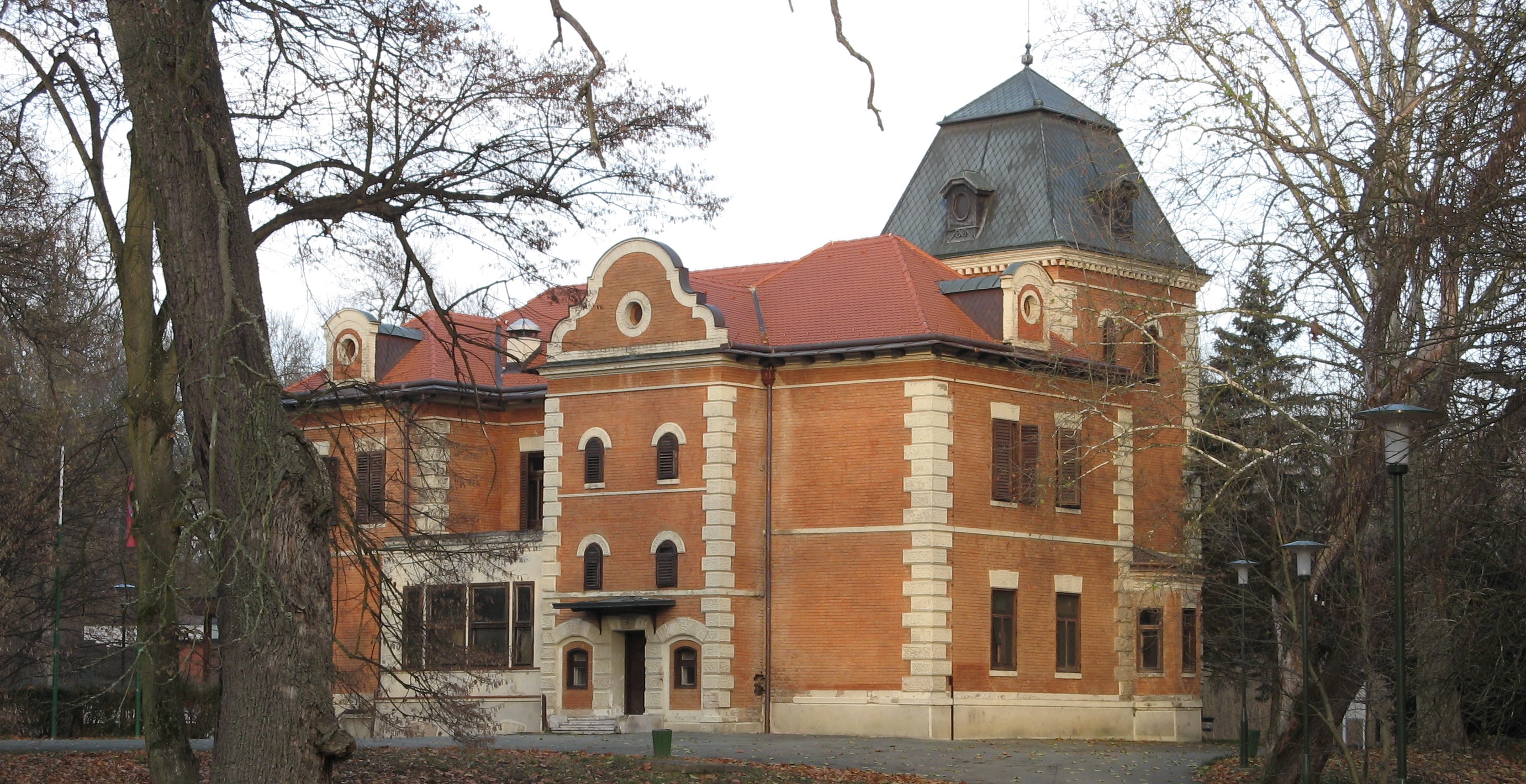
The castle is actually a complex with two buildings and service facilities. It was built in the 19th century by the Teschen line of the Habsburg family, to serve as a “head office” of the imperial hunting ground. After 1918 it had the same role for Karađorđević dynasty members (who built the main edifice in the thirties of the 20th century), then after the World War II Josip Broz Tito was the one who enjoyed it – at that time the castle saw many world politicians and celebrities who stayed here as his guests. Today the whole zone is a part of Kopački rit Nature Park.
During the war in Croatia, the castle was robbed and devastated. It was slowly decaying after that, in the middle of its forest full of wildlife and under its blanket of the rich history - until the recent renovation.
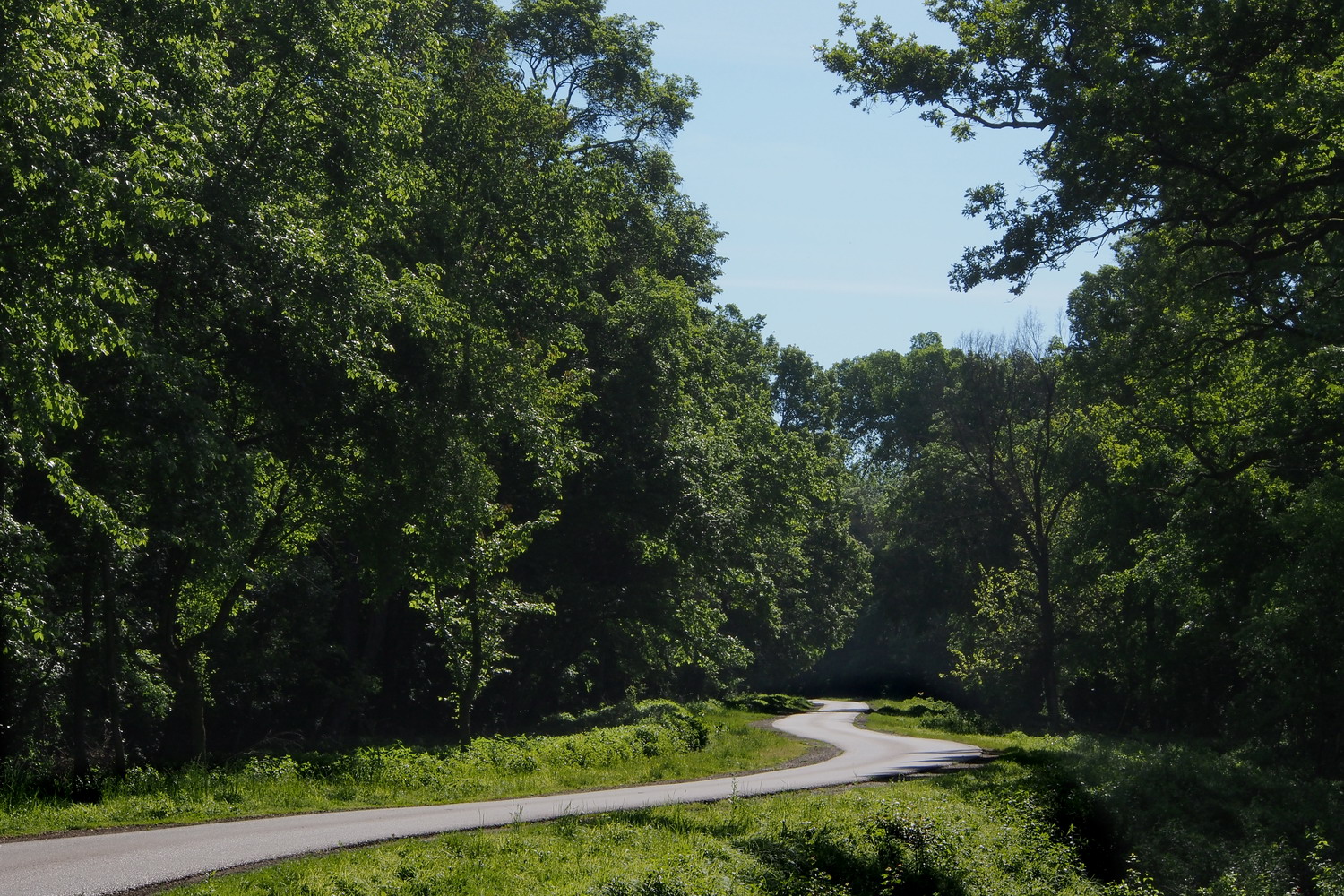

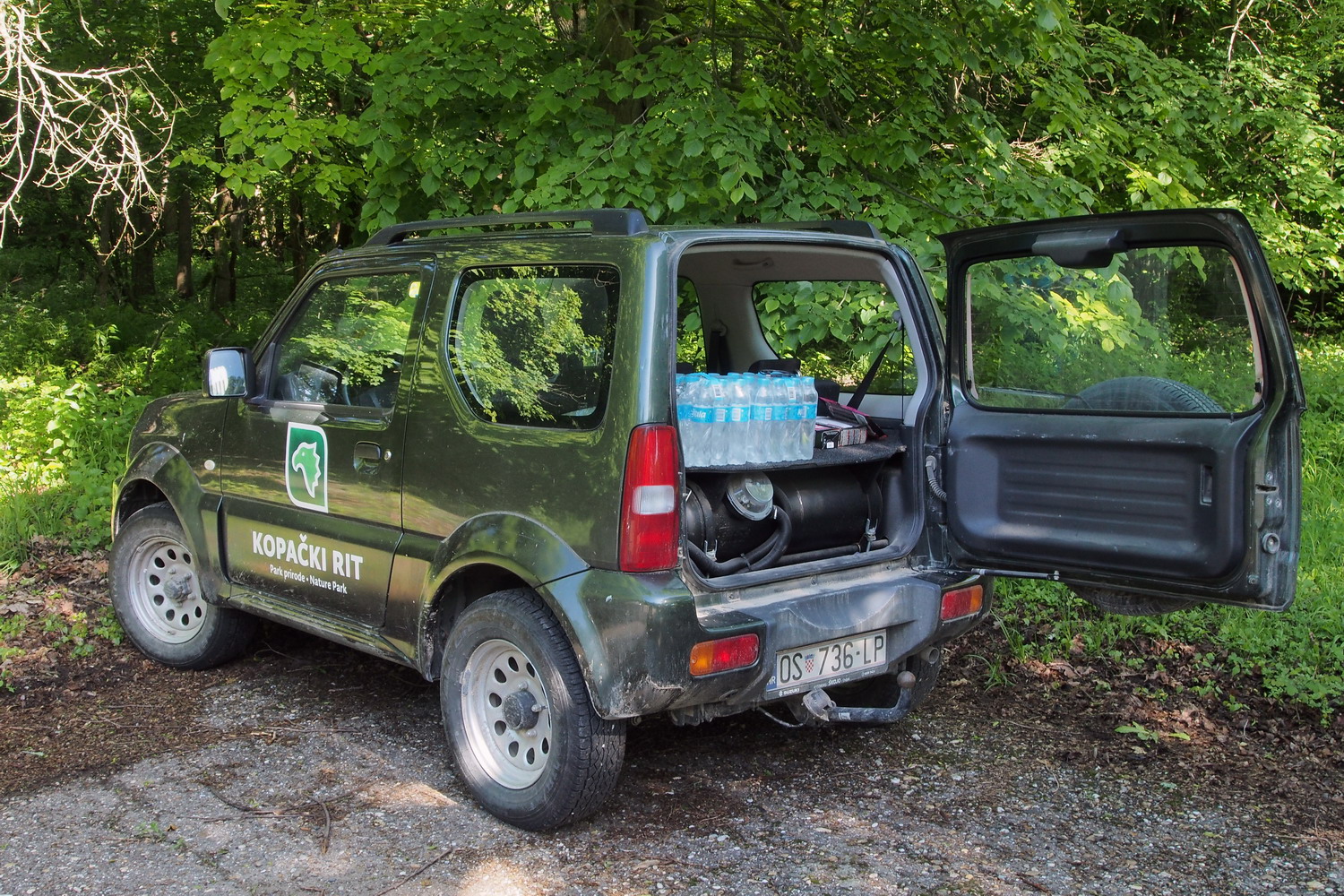
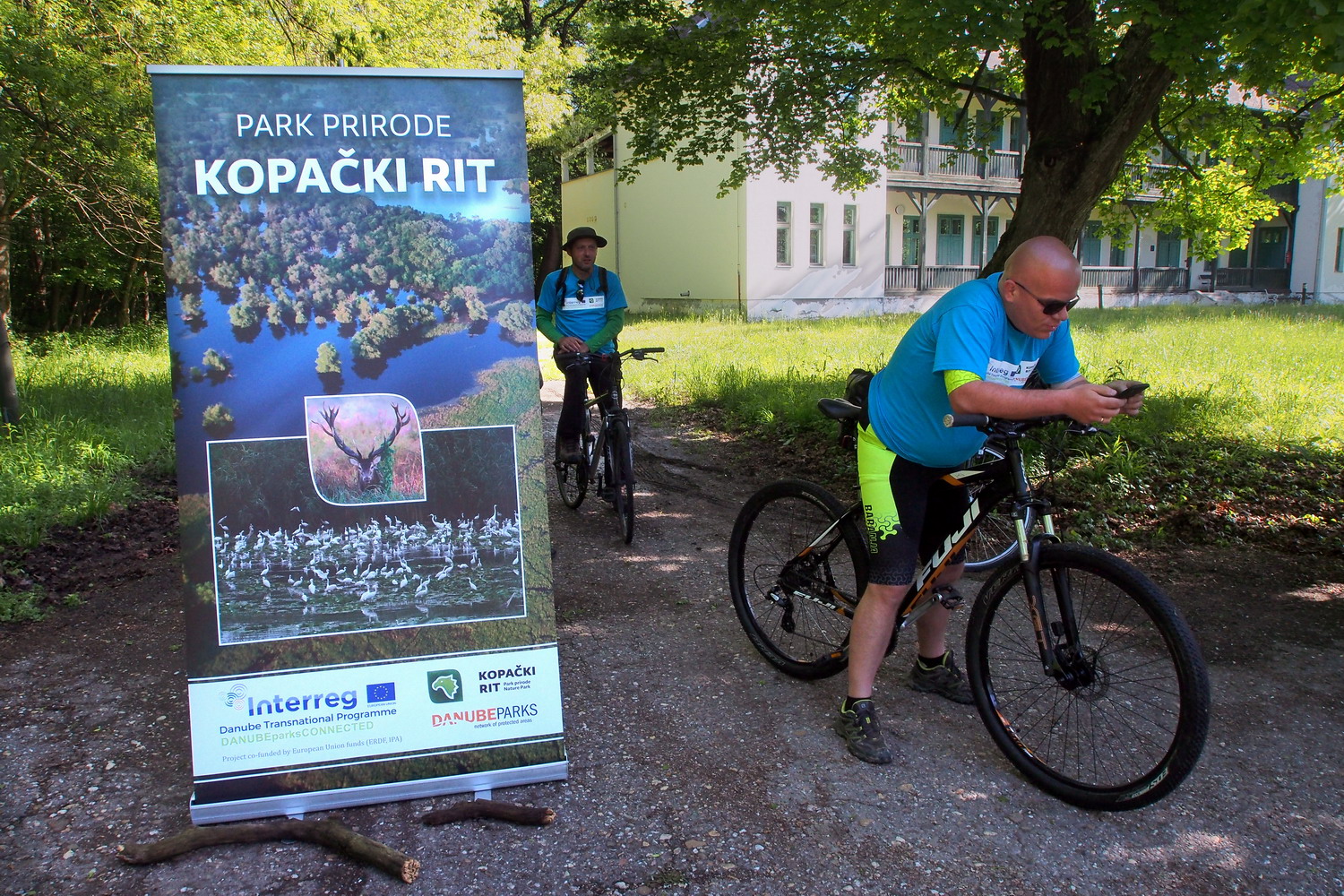
There is a bio-ecological station in the castle and that’s where I joined a group of local cycling aficionados. We even have one hand driven tricycle and I will share with them a ride to village Tikveš and behind it, along the very edge of the rit. (“Rit” - pronounced as “reet” - is generally wetland, but its more precise meaning is “reed beds”. It is the most usual expression in Croatia and Serbia to denote river wetlands and flooding areas, thus there are many rits along the Danube in these countries.)
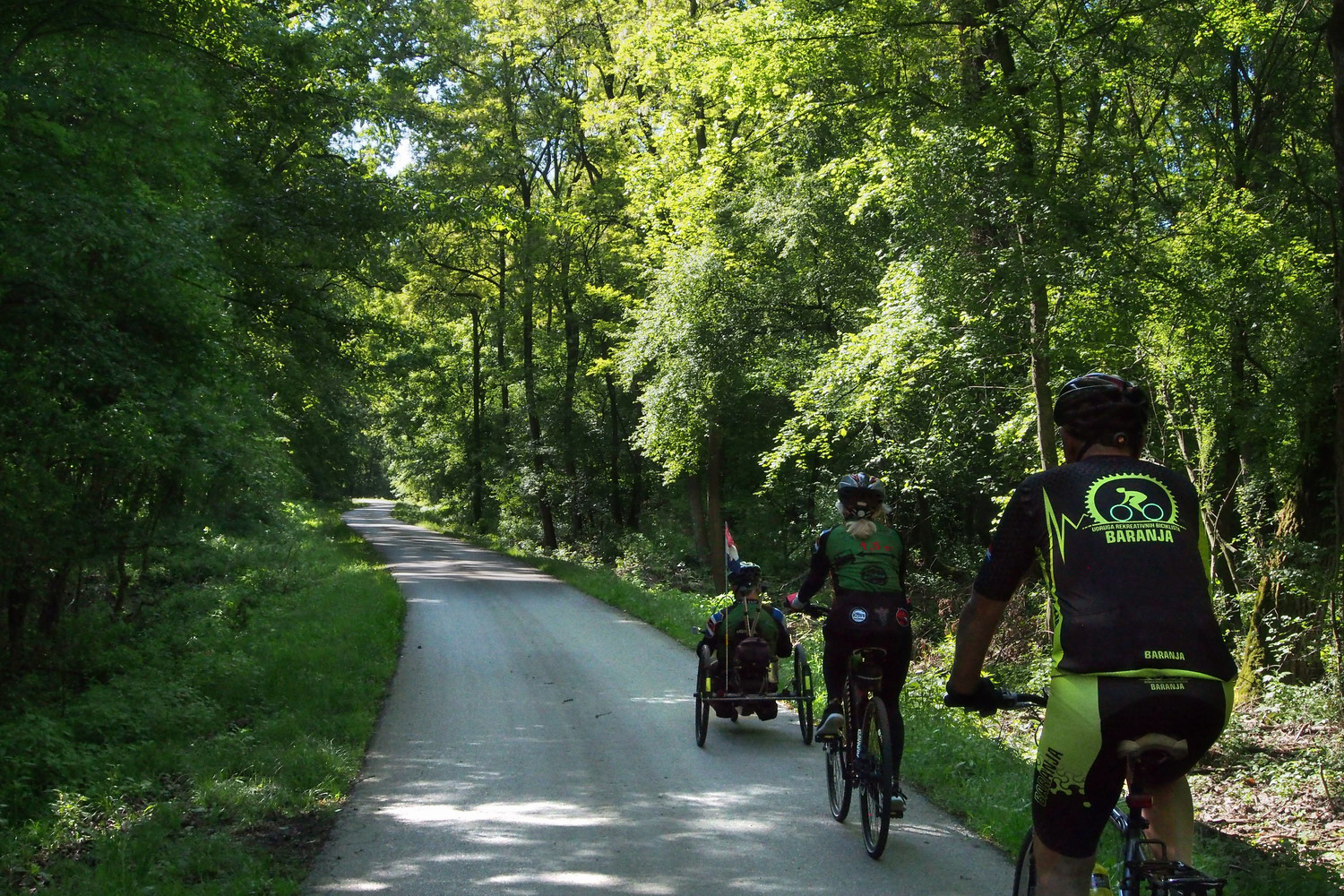
After exiting the forest, we were riding along a gravel road on the dam. At our right side, there were meadows, while hundreds of green shades sprinkled with blue strips on the left side denoted the magic kingdom of rit.
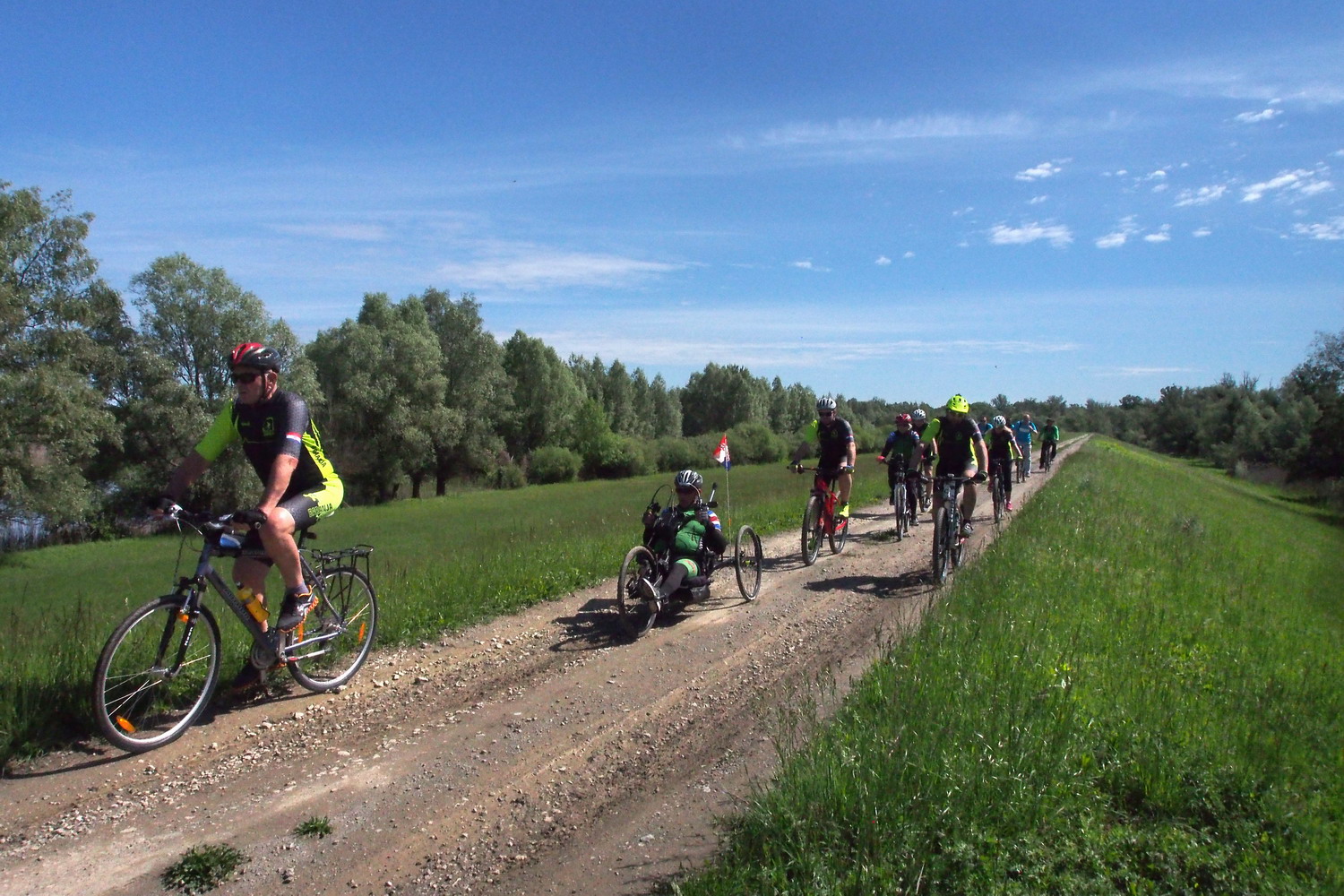

The Baranjska cycling route follows the embankment in Kopački rit.
 “The dam - or ‘bent’ as we say - is for protection from the Danube”, said Mr. Hrvoje Domazetović, a ranger in the Park, member of Croatian mountain rescue service and our guide. “The dam - or ‘bent’ as we say - is for protection from the Danube”, said Mr. Hrvoje Domazetović, a ranger in the Park, member of Croatian mountain rescue service and our guide.
“We are here all the time within borders of the Nature Park, but the zone at our left side - from the dam towards the Drava and the Danube – is a specially protected area, with the level of protection equal to one in a National park: no economic or commercial activities are allowed there, everything is left to natural cycles. Tourists can visit the rit only on specially built boats and escorted by our guides.”
We soon passed through the tiny settlement Tikveš that silently lied in the middle of the steppe, so-called “pustara” (meaning “empty, lonely space”).
Hrvoje Domazetović
“Pustara” is by definition a spacious land that is not being cultivated but serves for cattle, horse and pig breeding in the open. The name probably came from the Hungarian word "puszta", which usually translates as a “spacious plain”. (An interesting twist is that “puszta” itself quite obviously came to Hungarian from Slavic languages where it means “lonely”, “bleak”).
However, the same name was also used for planned settlements, founded as early as the 19th century (during the Austro-Hungarian period) in the regions of Slavonia and Baranja and intended for accommodation of workers at the surrounding large agricultural estates of Belje. Each pustara was also an administrative headquarters for each of these estates. Pustaras were like islands in the sea (of forests) or like oases in a desert (of grasslands). Being planned, all of them were basically the same, composed of three parts: a central administrative building, economy facilities around it, and a series of uniform buildings with lodging for workers (long units with six one-bedroom apartments for six families, or classic small houses).
And perhaps the best description of pustara was given by one of their inhabitants: "Living here means living in a large family where there are no secrets, in which everyone knows you from your birth, everyone lives with you, and you live with them.
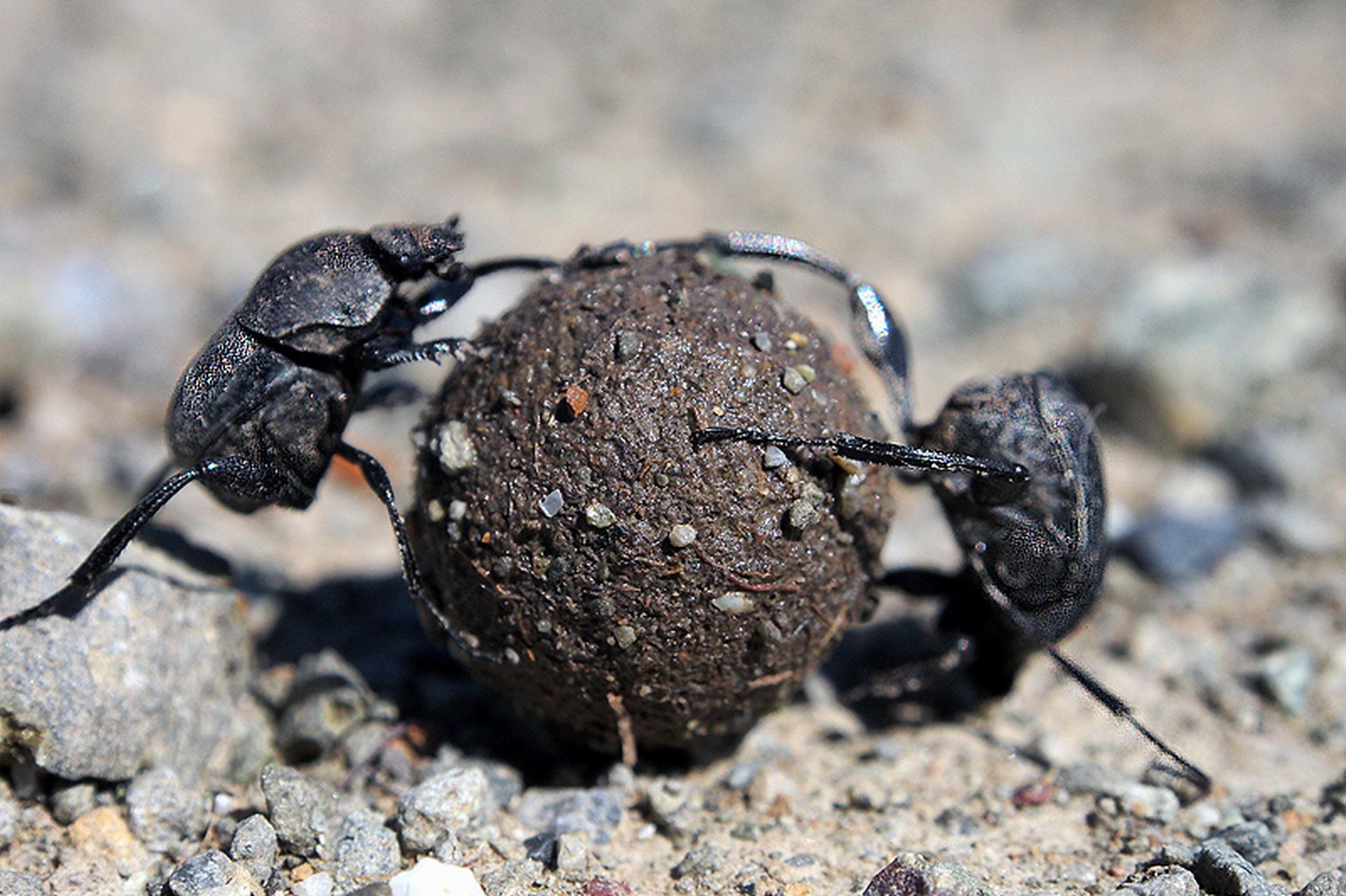
”Damn tourists – they do not have any other business than to
traipse around while others are working hard!”
We got in the way of these two dung beetles who rolled a well-formed
and seemingly delicious ball through the heat.
There were a lot of pustaras in Slavonia and Baranja, some of them even with thousands of inhabitants and with infirmaries, cinemas all other conveniences. But they have been slowly dying for a long time now and there is none left in Slavonia now, while in Baranja there are still a few, barely inhabited:
“Nowadays they quickly tear down the old settlement, clear the space and then build there a modern farm with a crew of 2-3 persons - one of them inevitably a computer specialist - that can take care of 2000 pigs for example”, sighs Hrvoje.
In the zone of Kopački rit there were four pustaras. Tikveš settlement is one of them. Inventory list: ten or so permanent inhabitants, two dozen buildings (most of them abandoned), a narrow road coming from The World and turning into the only street of the settlement before it ends at its opposite end. After that, there is only the forest. Water from a well, no shops. And that's all. Oh, and wild boars are patrolling yards in the night.
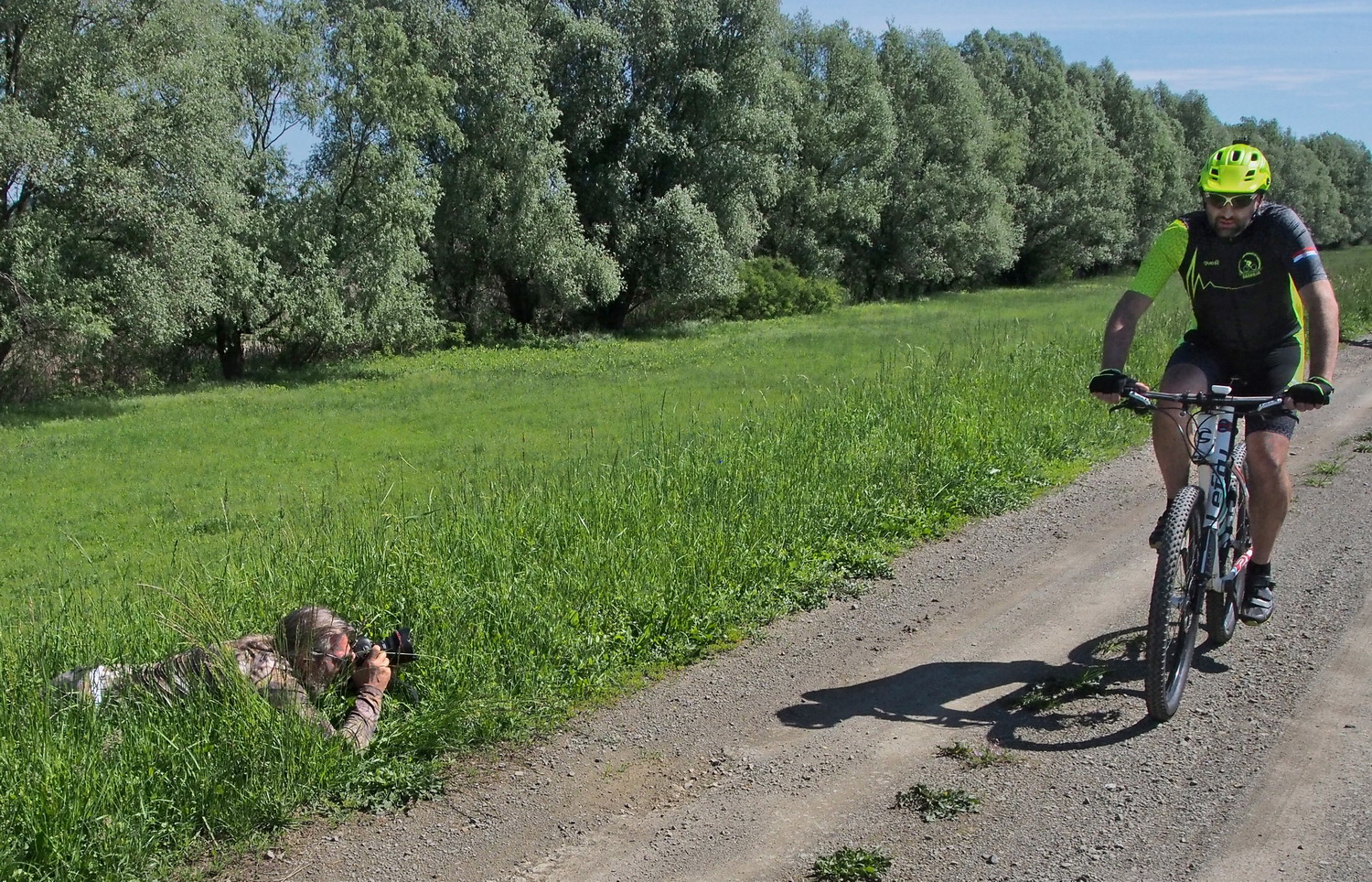
Doin’ it in a professional way
(This local photographer even used a drone :)
________________________________________________________________________________________
If NP = National Park or Nature Park, and PA = Protected Area, then PG = ?
Just a couple km after the entrance to Kopački rit Nature Park, one enters the nice little town Bilje. And like every other little town, it has a graveyard too. But the Bilje’s graveyard is unique: its area of half a hectare is a precious phytocenose, the only remaining steppe-like meadow in Croatia. There are 140 plant species there, some of them rare and endangered. That is why in the year 2000 this space was declared as a Monument of Nature. It is especially beautiful in May when blooming narcissi explode into a white carpet.
_______________________________________________________________________________________
With the total area 23,000 ha, the triangle of Kopački rit between the Danube (in the east) and Drava (in the south) is the largest internal delta of the Danube, and also one of the largest alluvial wetlands of Europe. It is extremely important as a spawning area for freshwater fish. There are 2,300 biological species in the Nature Park, many of them rare and endangered at the global and European levels. And it is an ornithological heaven, with about 140 nesting bird species - the most in all of Europe.
These are reasons why the Park is listed as an Important Bird Area (IBA), since 1993 as a Ramsar area (Wetland of International Importance), and since 2012 as a part of the Mura-Drava-Danube Transboundary Biosphere Reserve (established by UNESCO).
“Plus, it functions as a safety valve during floods, ‘swallowing’ the surplus water. Without it, towns and other inhabited areas of the region would have been in trouble many times in the past. In Austria, the fall of the Danube is 40 cm per kilometre, while here it is 20 cm per kilometre. Therefore, cutting this dam and building a new stretch of embankment to protect the important places in such a wide area would be very expensive: instead of the constructing an "L" line towards the Danube flow, the embankment would have to form a full semicircle towards the river (like when enclosing a fishpond).”
The topology of Kopački rit is a result of two forces: constant flooding creates many ponds while sedimentation elevates the soil around them (the terrain rises 1-5 cm per year), creating a magical maze.
In the organizational sense, Kopački rit is a nature park that contains a strict (special zoological) reserve of 7,000 ha in its heart.
As we enter more in the wetland, poplars disappear and willows become the only trees around. “That is because the willow is the only tree that can survive in the water for up to three months.”
Hrvoje passionately turns to as: “When water is high, there are floating nests. Then there is the time for fish to spawn. Then the autumn brings the roar of deer. The rit is changing a lot with seasons and even in mid-winter, it has a different sort of beauty to the summer. Old trees and eagles make you aware of the power of nature, there is a chance to see foxes, jackals… That's why I think that it is more beautiful here than in the Kornati (an archipelago of small islands and National Park in the Adriatic Sea, Jovan’s comment) - in 13 years that I have been working here, not a single year was the same for me.”
Our ride ended at the entrance to the village Kopačevo, in front of the Visitors Centre. This point is also the start of an amazing labyrinth of elevated wooden boardwalks which allow visitors to closely experience the atmosphere of the rit. (The only other chance to do the same is by boat cruise.)
“We sometimes have as much as 1000 visitors per day”, says Tomislav Bogdanović, the director of the Nature Park. “And on a yearly basis, we have 40,000 guests on average. But now, when the Tikveš Castle is ready to accept tourists and to offer them several different services, we will have an even much stronger position and expect to have up to 100,000 visits per year.”
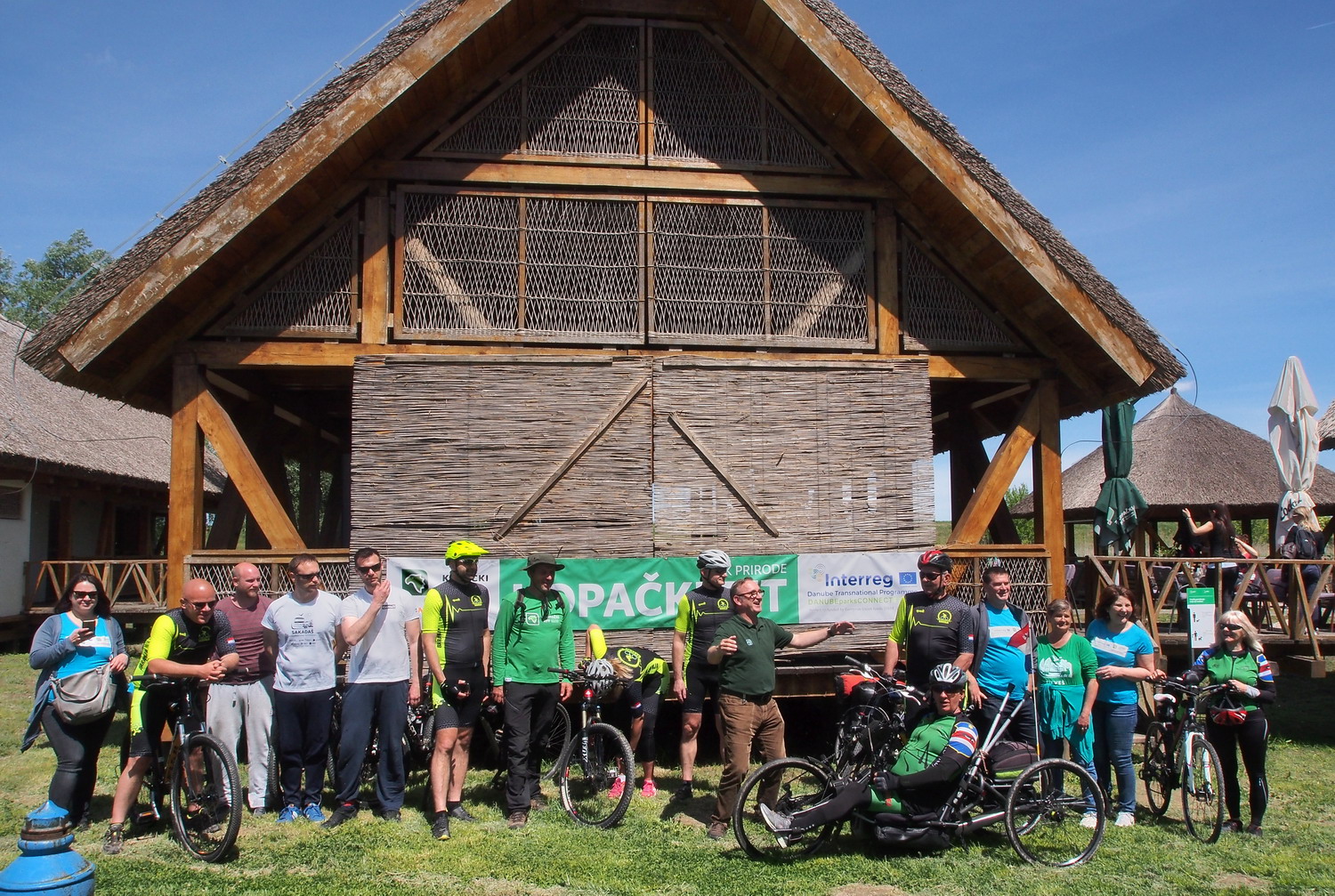
Welcomed by the Park staff and by director Tomislav Bogdanović.
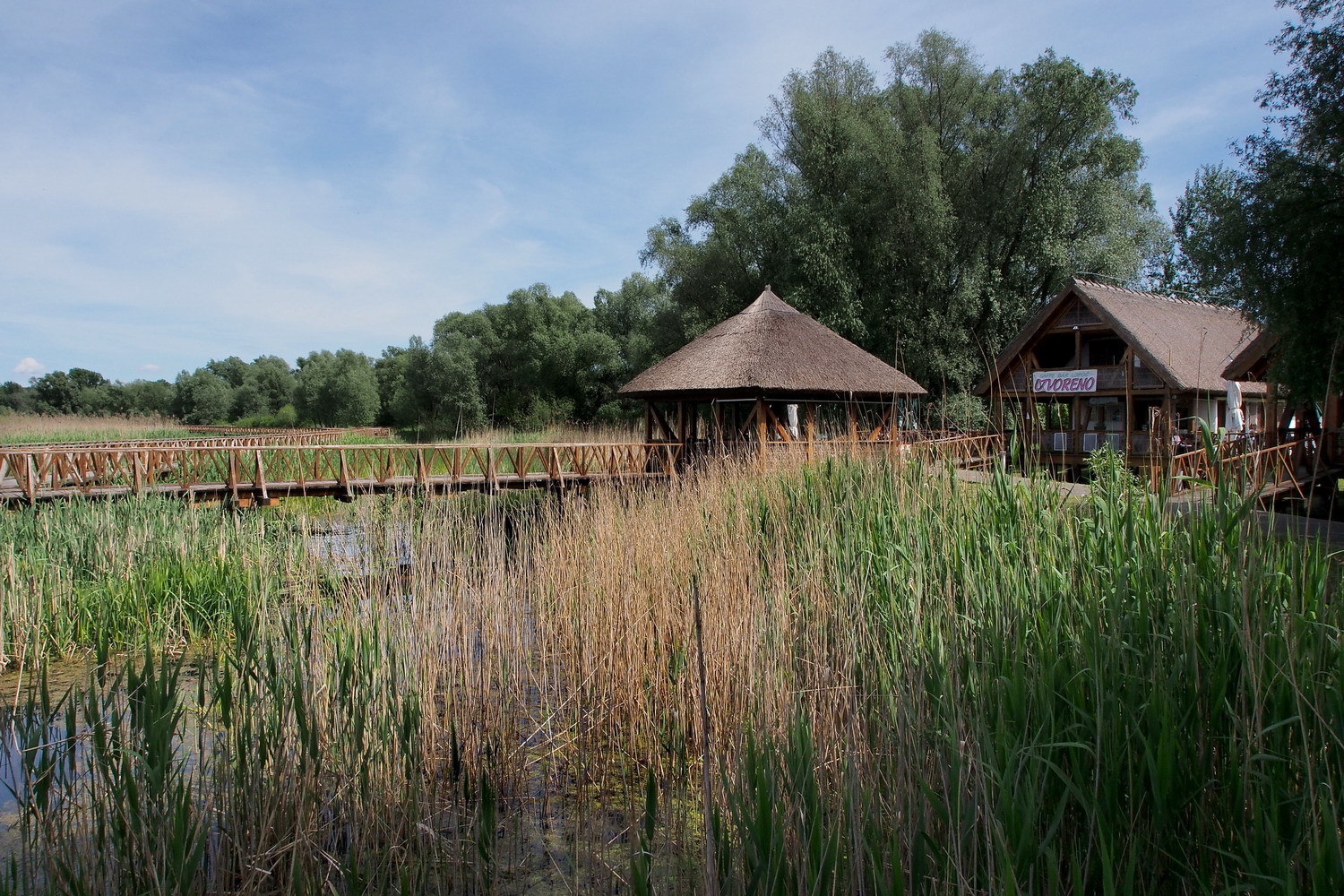
The Park entrance
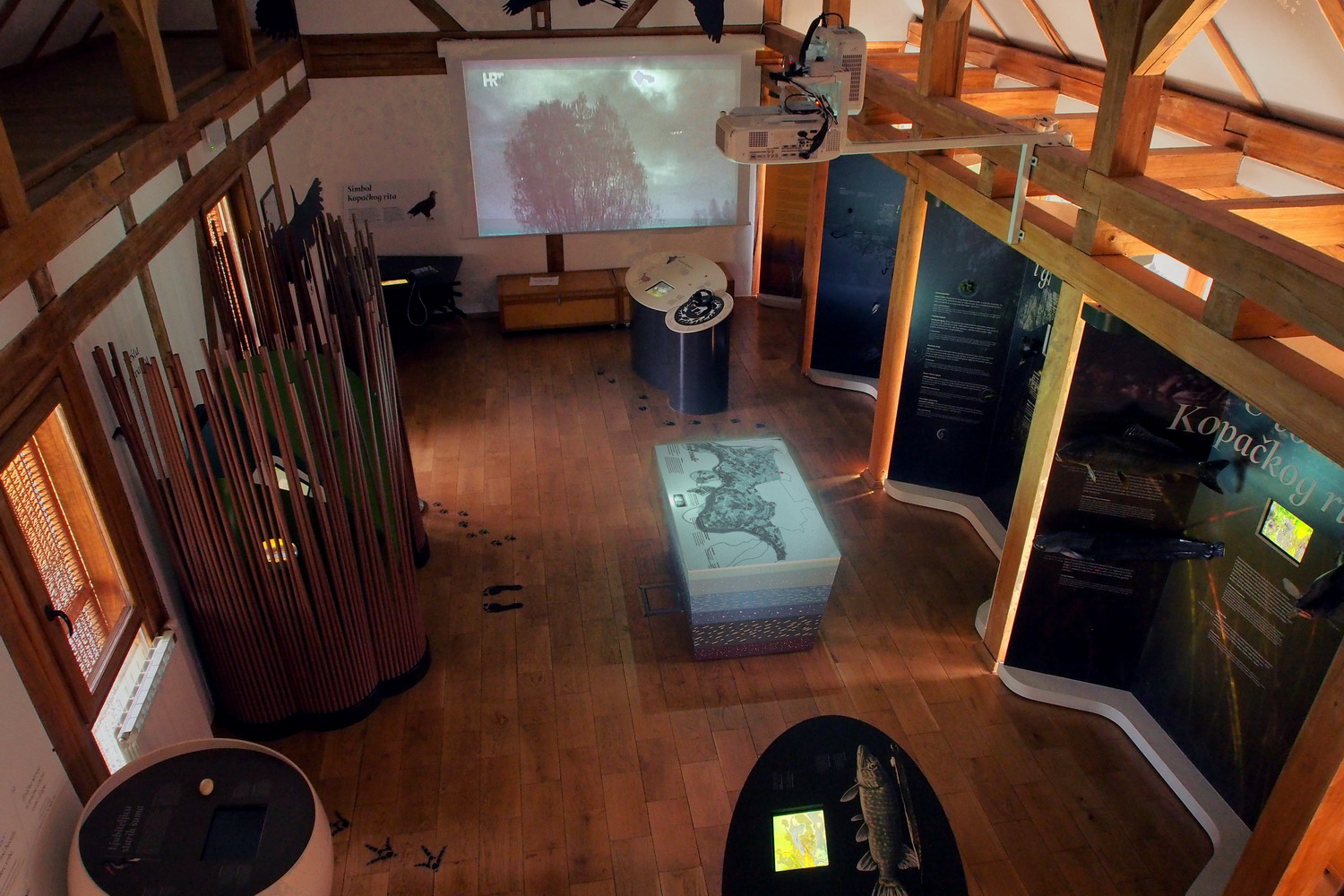
Exhibition and education space
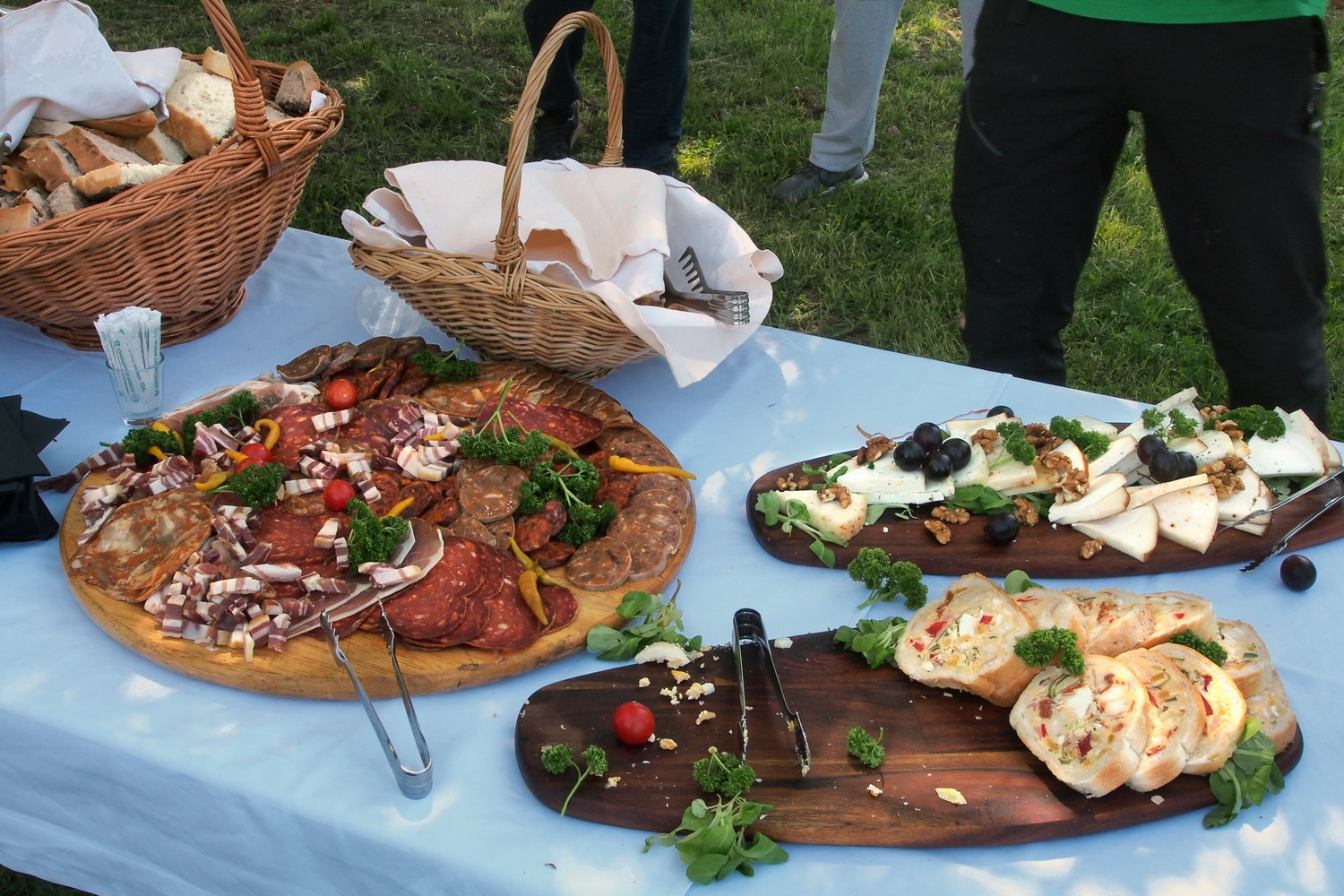
Some of the food that you can find in the rit.
Well… not exactly in the rit, but definitely in a restaurant at the Park entrance.
What about cycle tourists - do you have any significant visit of that sort, having in mind that the Park is positioned directly on the route EuroVelo 6?
Last winter we installed a cycling counter nearby. It shows a minimum of 100 visitors on two wheels during weekend days, 20-25% from that number being foreigners. However, on average one foreign cyclist visits the Park per day. We plan to attract more visits of this type by increasing accommodation capacities in the village, which will encourage guests to stay here. Except for the ecological value of cycling, our interest also lies in the simple fact that an increased number of cycle tourists will also improve the Park image. Furthermore, we want to have a complete tourist program here.
We believe that we have the best-preserved flood valley along the Danube, spreading on 15,000 ha. A strong indicator for that is the population of the white-tailed eagles: there are constantly about 60 pairs of them and the total number of individuals is about 200. Also, the width of Kopački rit is remarkable: up to 11km from the river to the embankment (like exactly on this place where we are standing now). At some places the span from the beginning of the wetland on this side to the end of the wetland on the opposite side of the river is 18km. (The rit on the opposite side is Gornje Podunavlje Special Nature Reserve, and in between is the border of Croatia and Serbia - but for birds and fish it is, of course, a unique space.)
The core of the Kopački rit is its special zoological reserve that spreads on 7,000 ha, and only scientific and educational activities under the supervision of the Park are allowed there. That level of protection in an area of such size does not exist anywhere along the Danube.”
Speaking of which, what is the system of nature protection in Croatia?
“There are:
- Strict reservation;
- National park;
- Special reserve (which in practice has a higher level of protection than a National park; Lakes Plitvice, for example, is a National park, but contains one Special Reserve too);
- Nature park (the level of protection in an Croatian NP is equal to one in a Hungarian or Serbian national park).“
Are you satisfied with the general position of the Nature Park?
At a larger scale one can note that the average level of public and bureaucratic awareness regarding nature is still not completely satisfying. But since the independence of Croatia the nature conservation sector has been steadily strengthening and legislature follows that trend. Natura 2000 brought the final touch on top of that, and we don’t have to worry anymore that, for example, someone might build a weekend house in a protected zone, wherever that zone is located.
There is also a significant and steady increase of income (and absolutely, of visits) in national parks and nature parks in Croatia. We have good cooperation with those with whom we share this area - forest, hunting and water management industry.
The tourism in Kopački rit has been developing strongly in the last 5-6 years, which is linked to the development of infrastructure - the most influential step in that process was the construction of the 2,5 km long network of elevated boardwalks in 2015.
So yes, we can say that we are satisfied with the situation.“
I also had a pleasure to speak with Mr. Vlatko Rožac, a Conservation Manager at the Park and also the President of the DANUBEPARKS’ Board of Directors.
„It is our third project in the frame of DANUBEPARKS. We were observers in the first one and in the second and third one we participated as partners. Besides other project activities, that gave us a chance to visit all partners so far except Persina Nature Park, and the exchange of knowledge and experience was extremely valuable.”
Vlatko puts one of the most important rules of the Kopački rit Directorate into a single line: „Visitors - yes, but the protection of nature is in the first place.”
A fascinating thing is the fact, that Kopački rit is flooded on average of 99 days a year, while the entire area is underwater for an average of 32 days. And there was an interesting detail about the mechanism of the flooding process:
“The change of the water level in the rit is mostly dictated by the Danube, despite the fact that the Drava is at some points only 300 m away. When the Drava grows this single event doesn’t change the Danube water level. But when the Danube grows it slows the Drava and increases its water level upstream from the mouth, while at the same time the Danube already fills the rit. That's why the Drava affects the water levels in the Kopački rit by only 10%.
And the level change can be very fast: it sometimes happens that the Danube rises two to three meters in one day and then drops overnight, leaving fish on dry land at some places.”
And the last info for me before enjoying walking on the boardwalk:
“The boundary of the Nature Park is the embankment, so technically the boardwalks are not part of the Park. But that is just an administrative curiosity - the important thing is that the zone where they were constructed was carefully chosen because it shows, on a small scale, all typical habitats of the rit.”
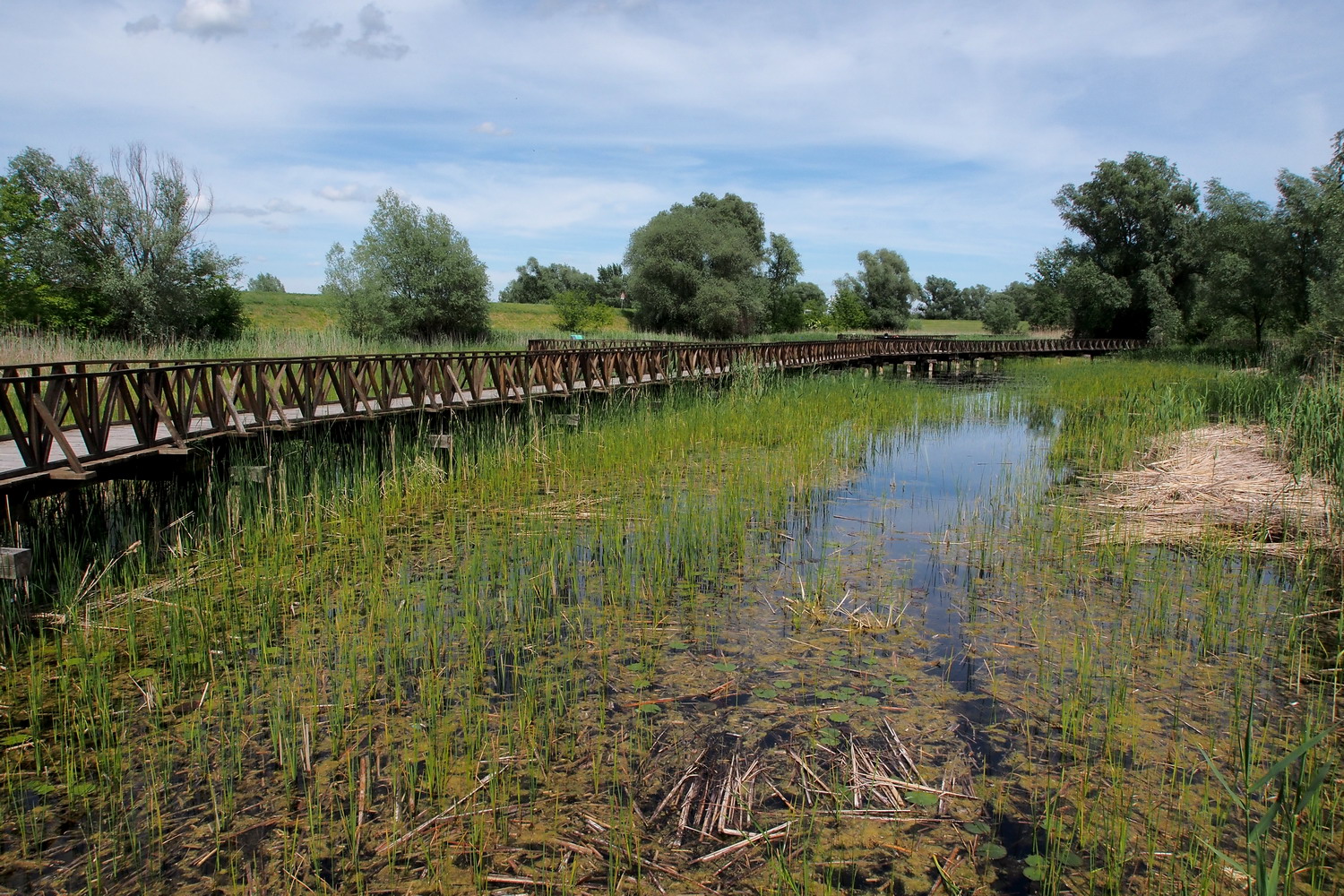
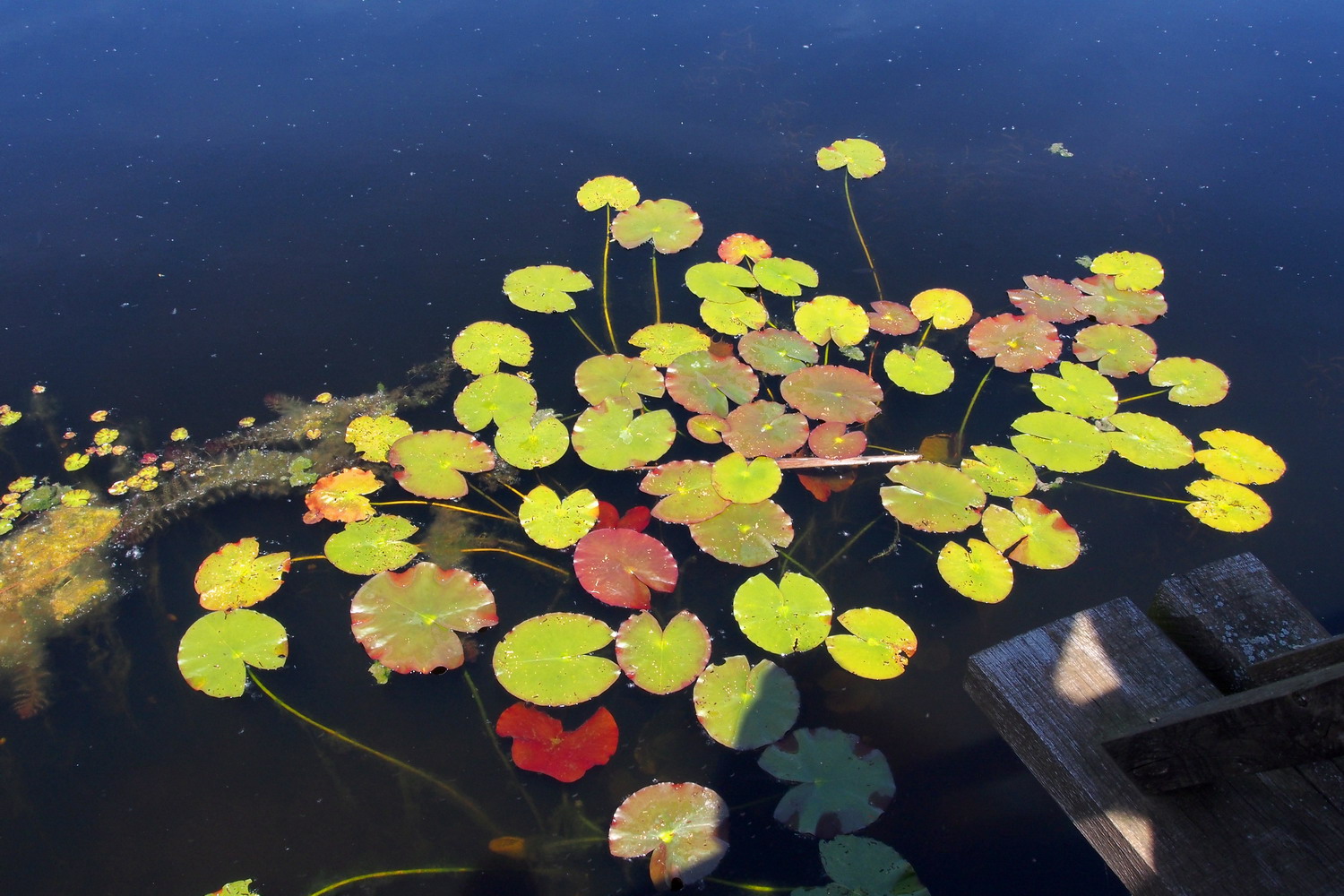

Swans in their large nests can be also nicely observed from the boardwalk.
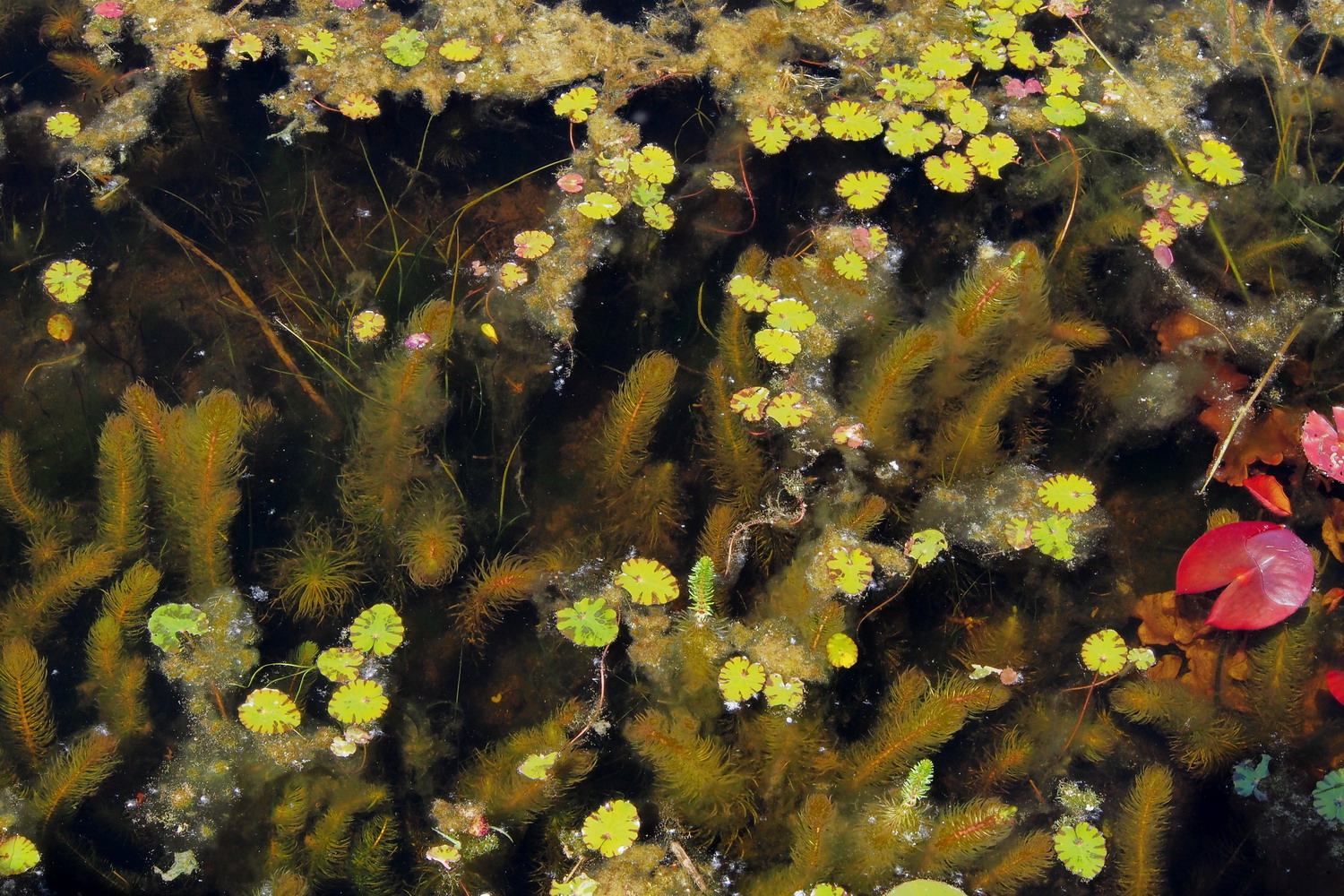
Potamogeton (”mriješnjak” in Croatian) is an underwater plant
which is very important for fish spawning.

Beautiful little rest spots along the way.
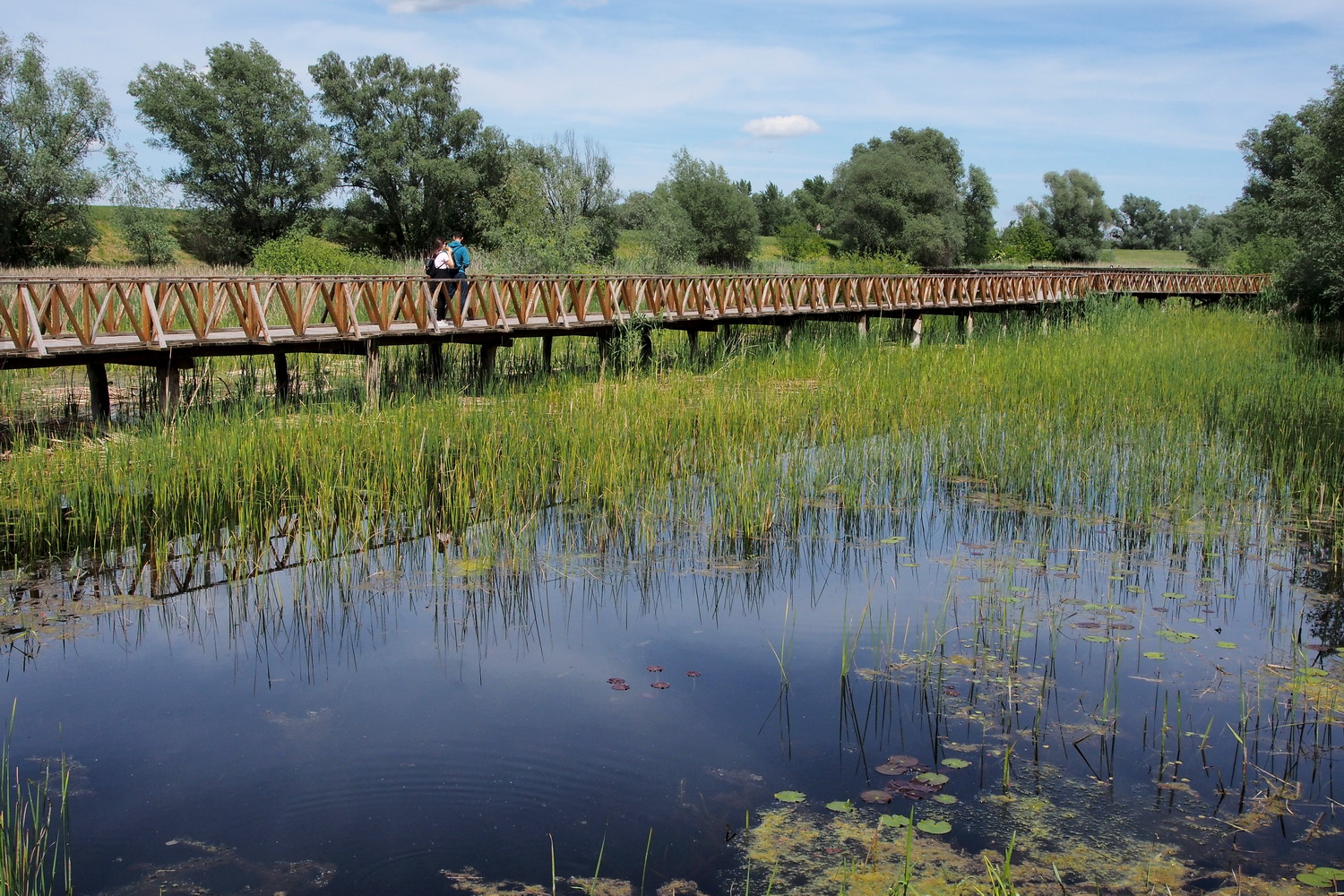
The best part of the visit was left for the end: I boarded the boat with Damir Vuletić, park officer and an expert guide, and headed for the heart of the rit.
“A huge part of that heart is actually an island of the area of 5000 ha, separated by the 15 km long channel Vemeljski Dunavac. This and other channels compose the inner ‘bloodstream’ of the rit and also connect it to the Danube and the Drava. The two rivers bring some unwanted "gifts" from the civilization into peripheral zones of the rit, and that requires intervening. For example, we recently engaged 40-50 workers to clean the Vemeljski Dunavac from plastic bottles and other waste. Such actions are carried out in periods of low water so that a location can be reached by land.”
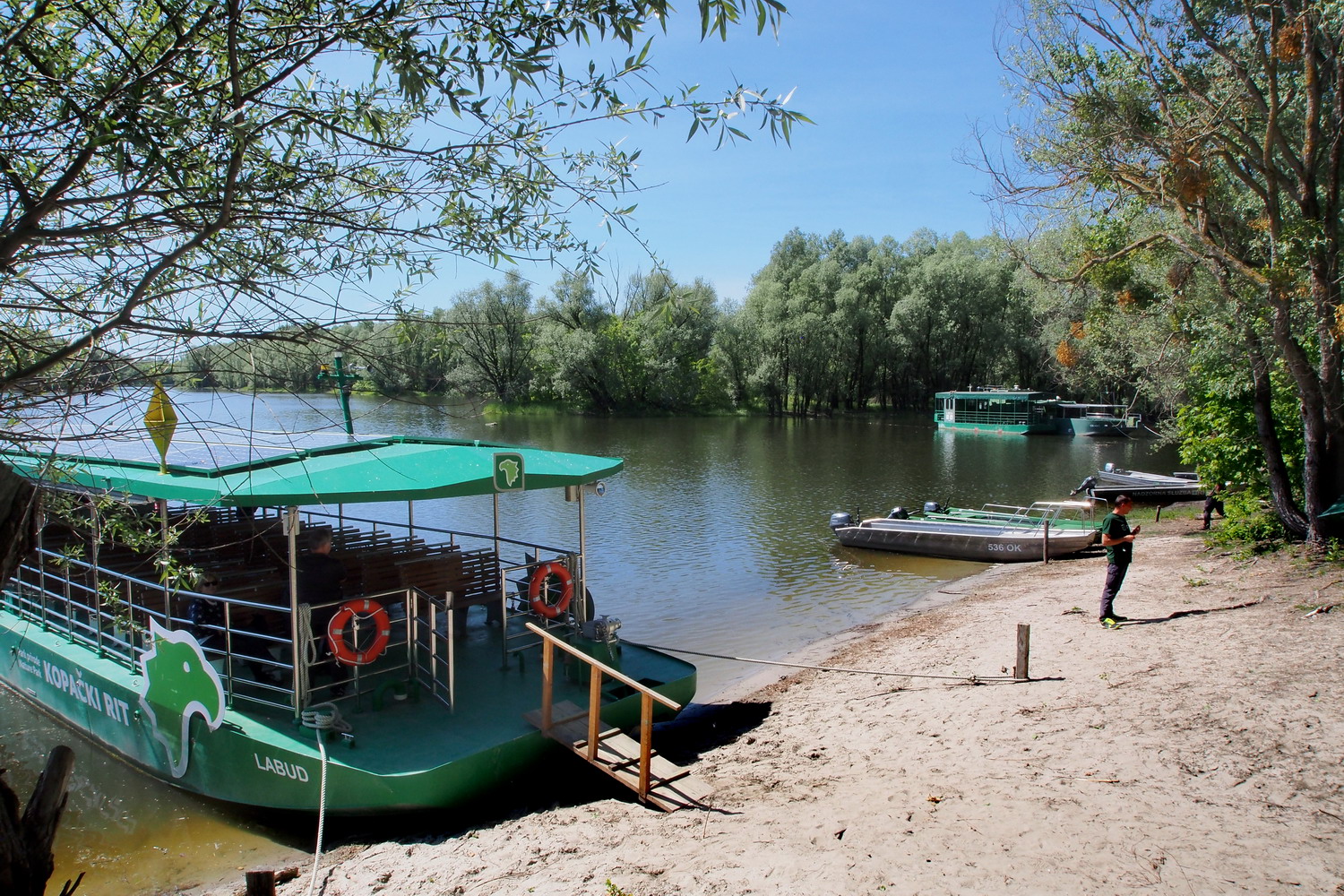
Tourist boats take visitors through the Special zoological reserve of Kopački rit.
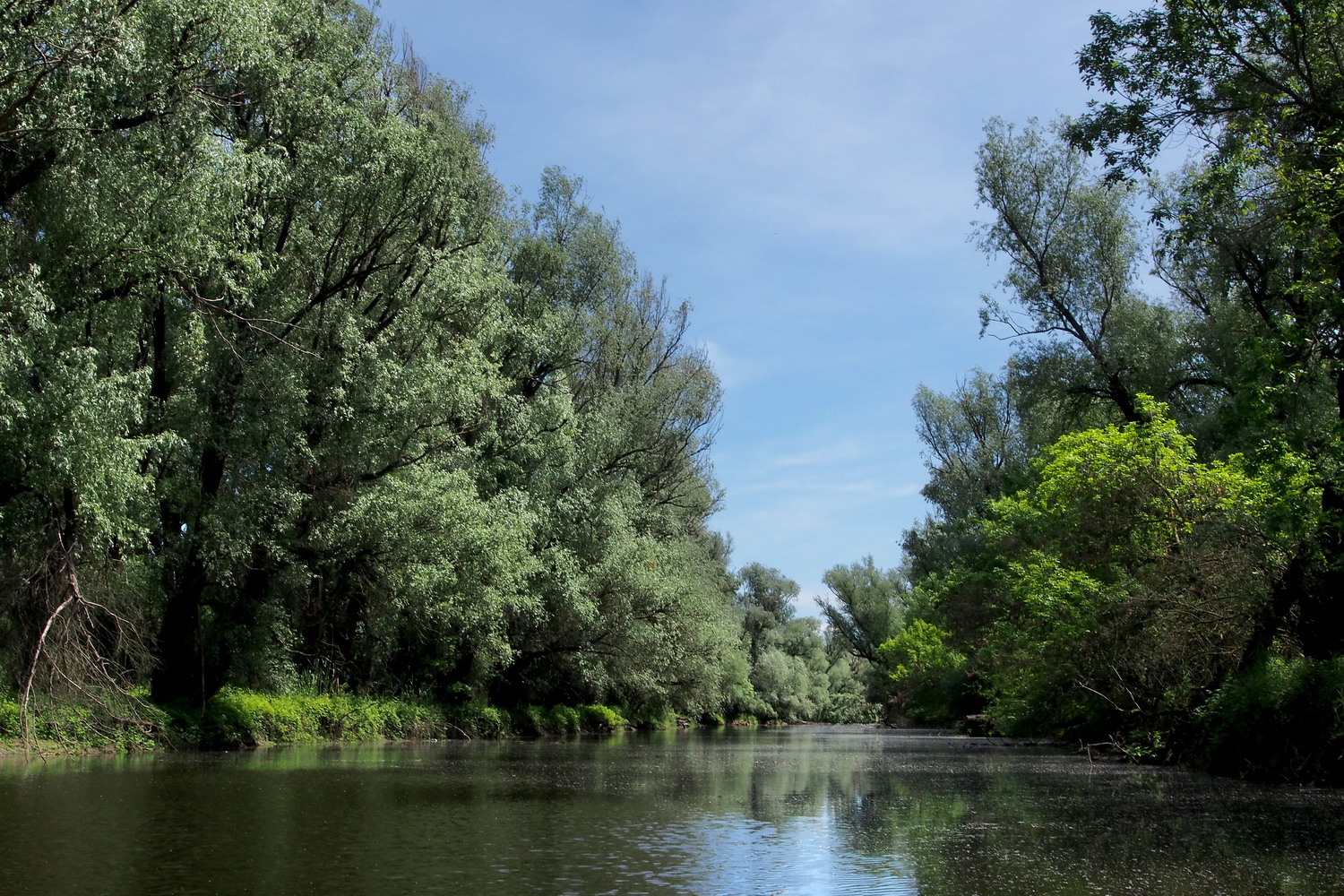
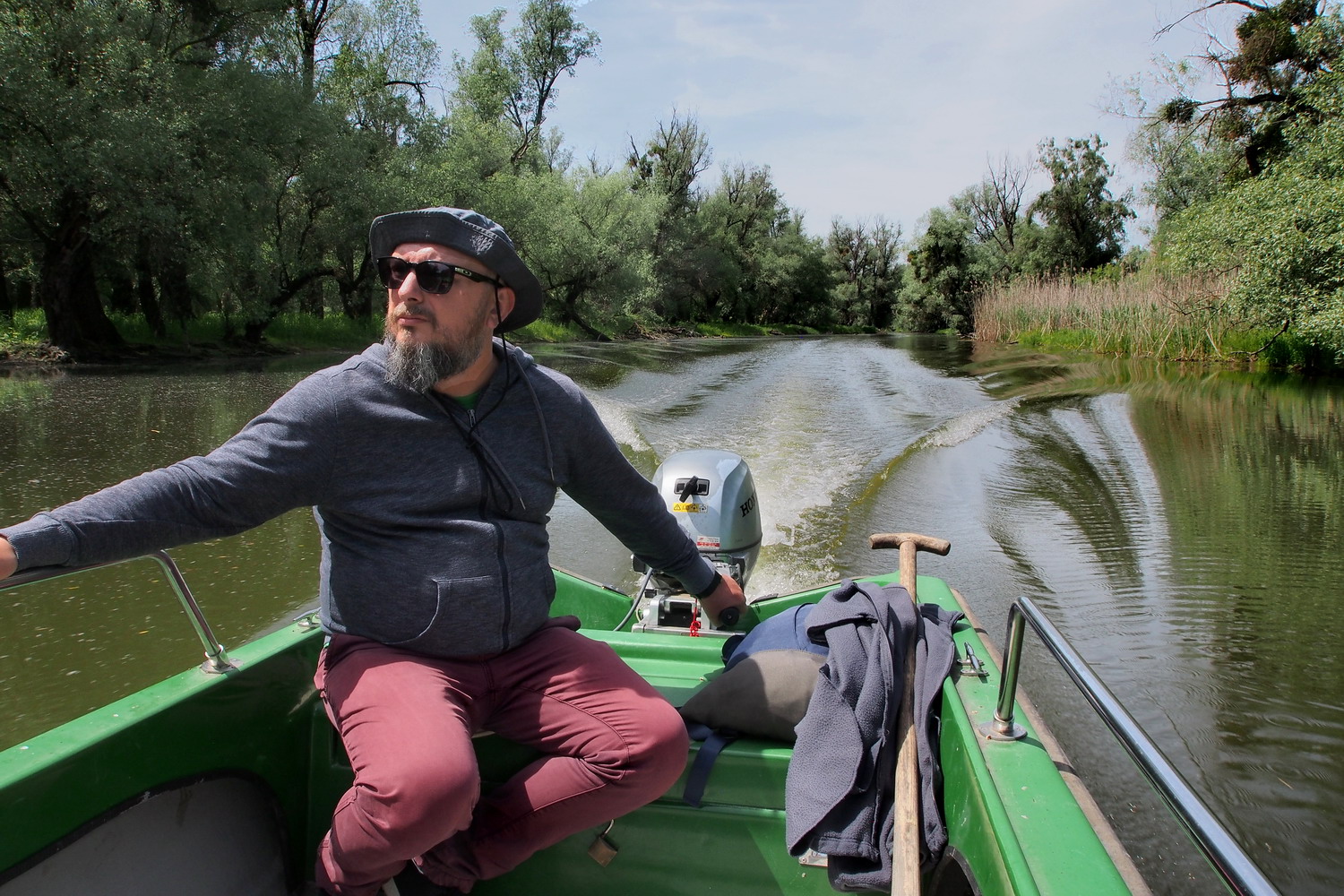
Damir Vuletić, park officer and an expert guide
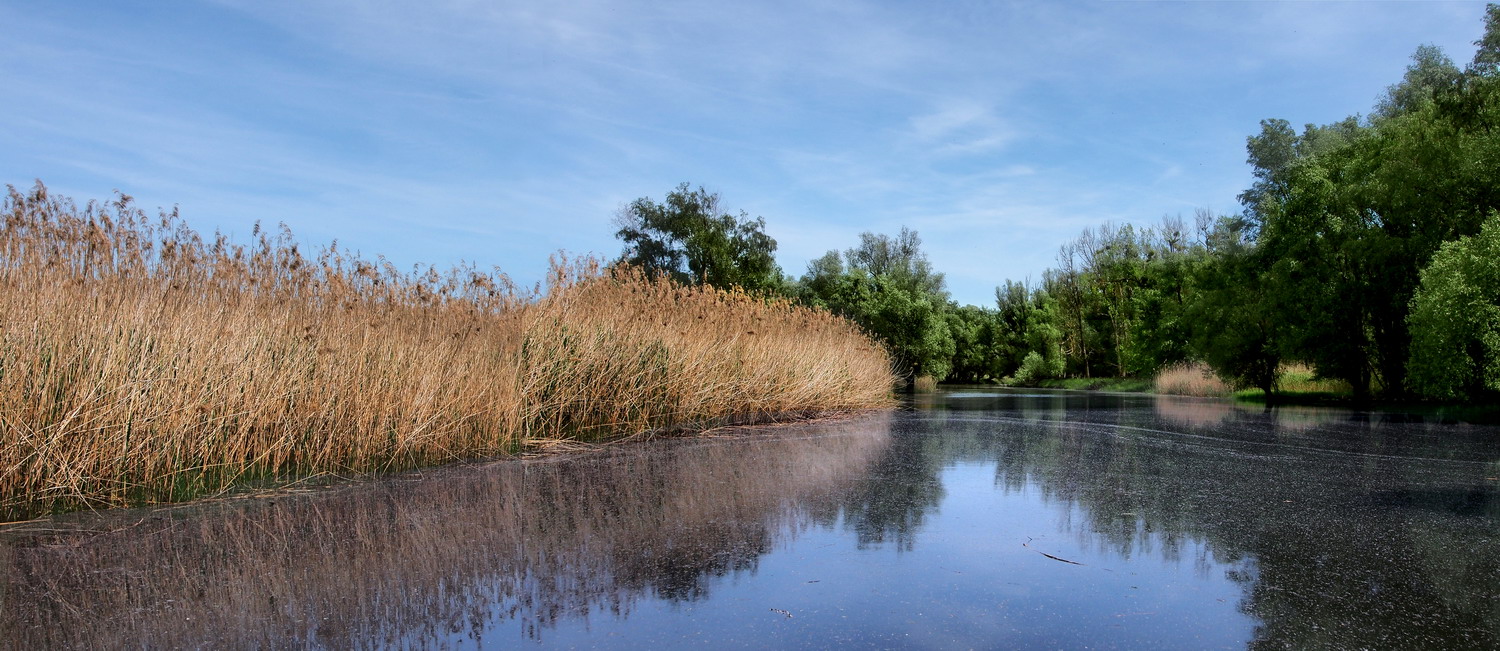
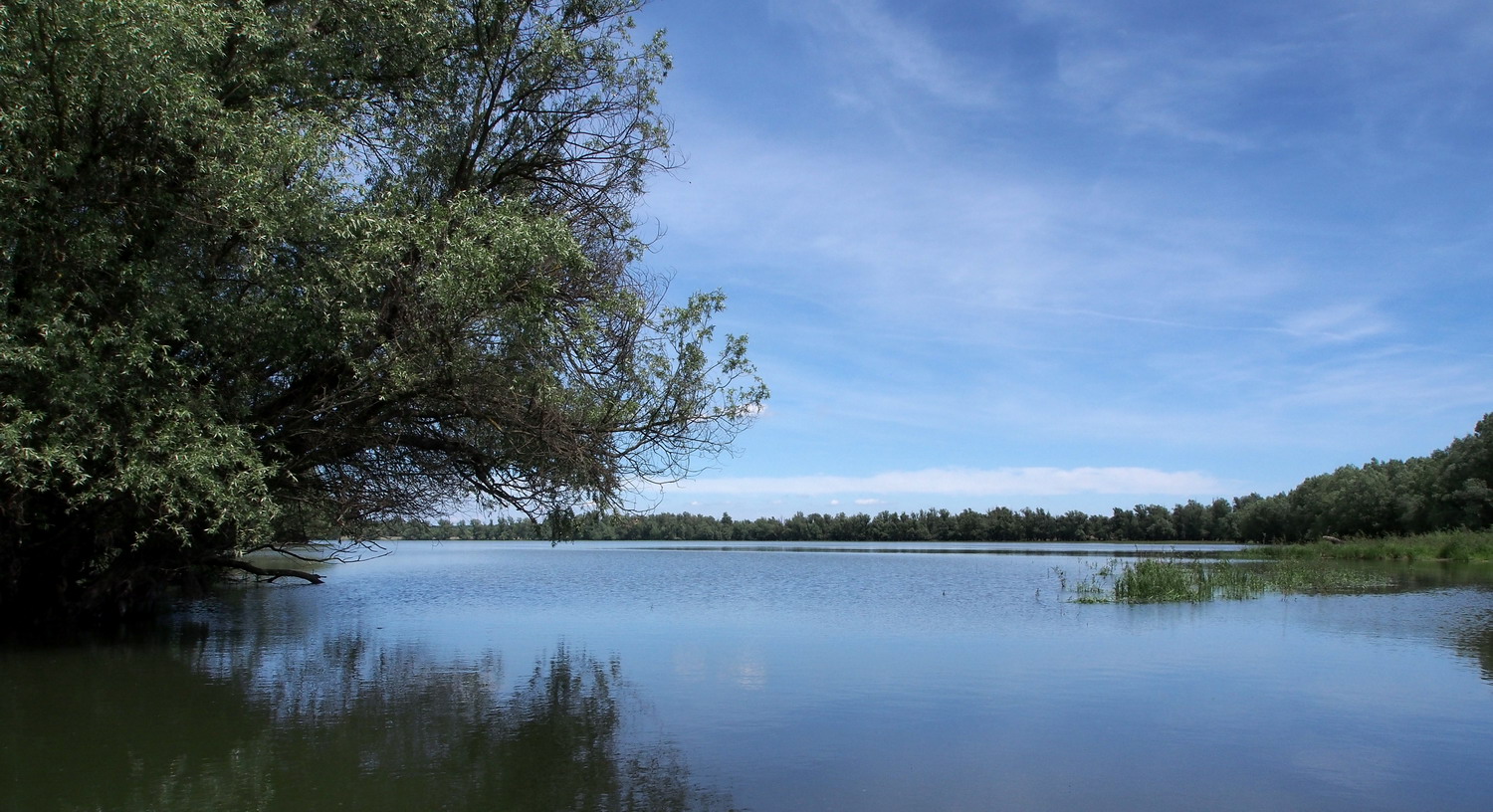
Entering Kopačko lake, the largest in the rit.
With thousands of birds and shiny blue skies above the Kopačko lake, it looked that we landed somewhere in Africa. There is an abundance of fish here: pike, perch, bream, catfish, rudd… almost 50 species.
“We also have jackals here - two or three packs are sniffing around lately”, adds Damir.

On the Kopačko lake
Symbol of the park is the White-tailed eagle, one of the largest in the EU (with the wingspan reaching more than two meters) and a true athlete: with an average weight of 4 kg, he can pull up from the water a fish whose weight is twice as big as his. (The eagles of Kopački rit feed on fish and don’t need to pay much attention on other birds.) White-tailed eagles live as couples and stay with their partner for a lifetime. They typically nest in oak forests but also on willows, and constantly upgrade their nests so some of them can reach the size of 3 square meters and 700 kg of weight. And there is no mercy in an eagle's household: the strongest youngster will throw his brothers and sisters out while the parents are absent.
There are about 1000 couples of cormorants in the Park. These birds can dive to a depth of up to 9 m and eat about a half kilogram of fish a day. That is a ton of fish every day, and this fact actually illustrates how abundant the fish world of Kopački rit is.
An uninformed observer might think that cormorants like to swagger a lot, but unlike other wading birds they actually do not have sebaceous glands and can’t lubricate their feathers to make them waterproof. Instead, they have to dry them after diving – that’s why you see them so often with their wings spread and ‘posing’ on branches. Another popular activity of cormorants is to 'burn off' the poplars on which they nest – that’s actually what the acid from their excrement does.”
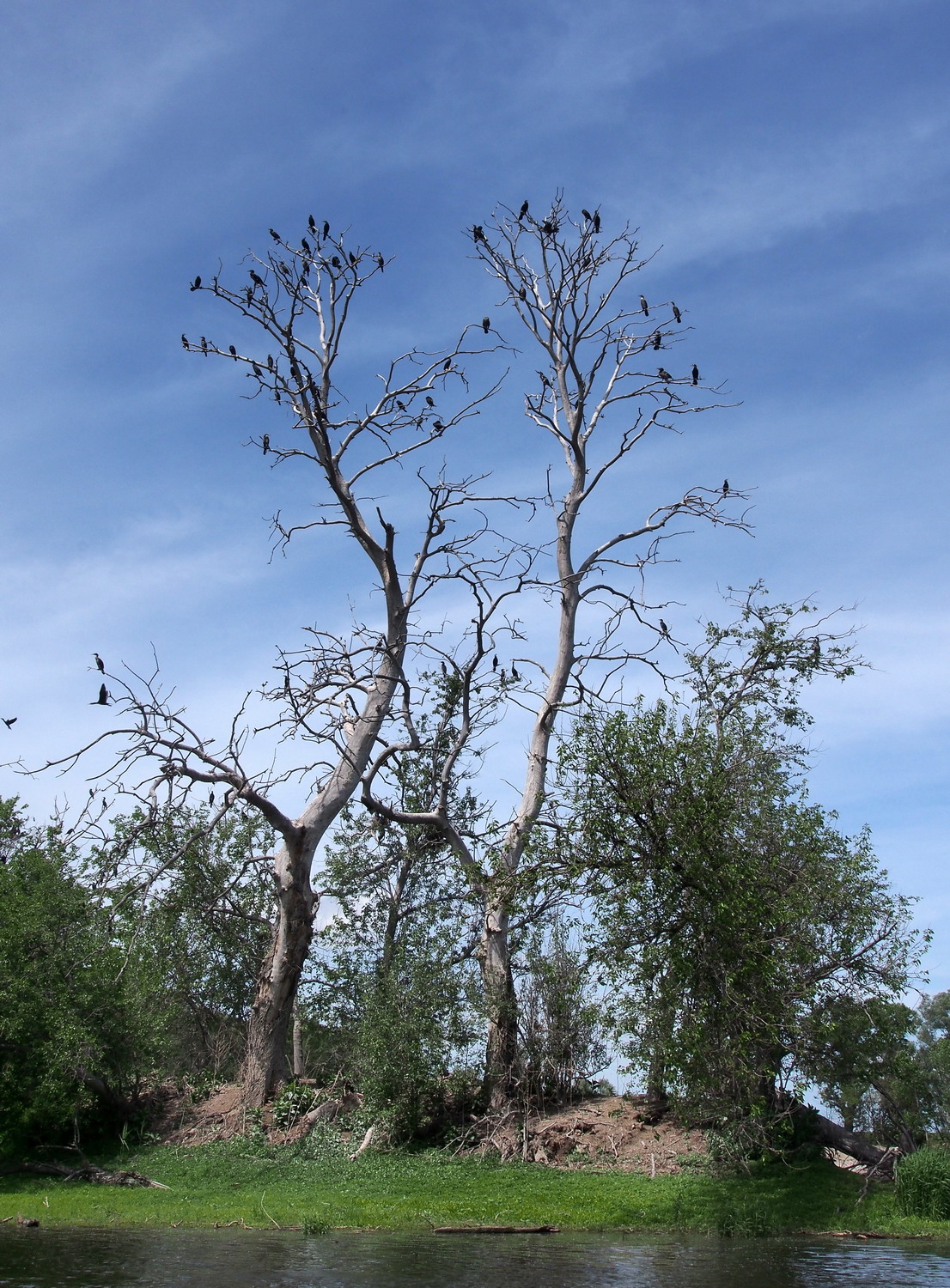
The cormorants of Kopački rit
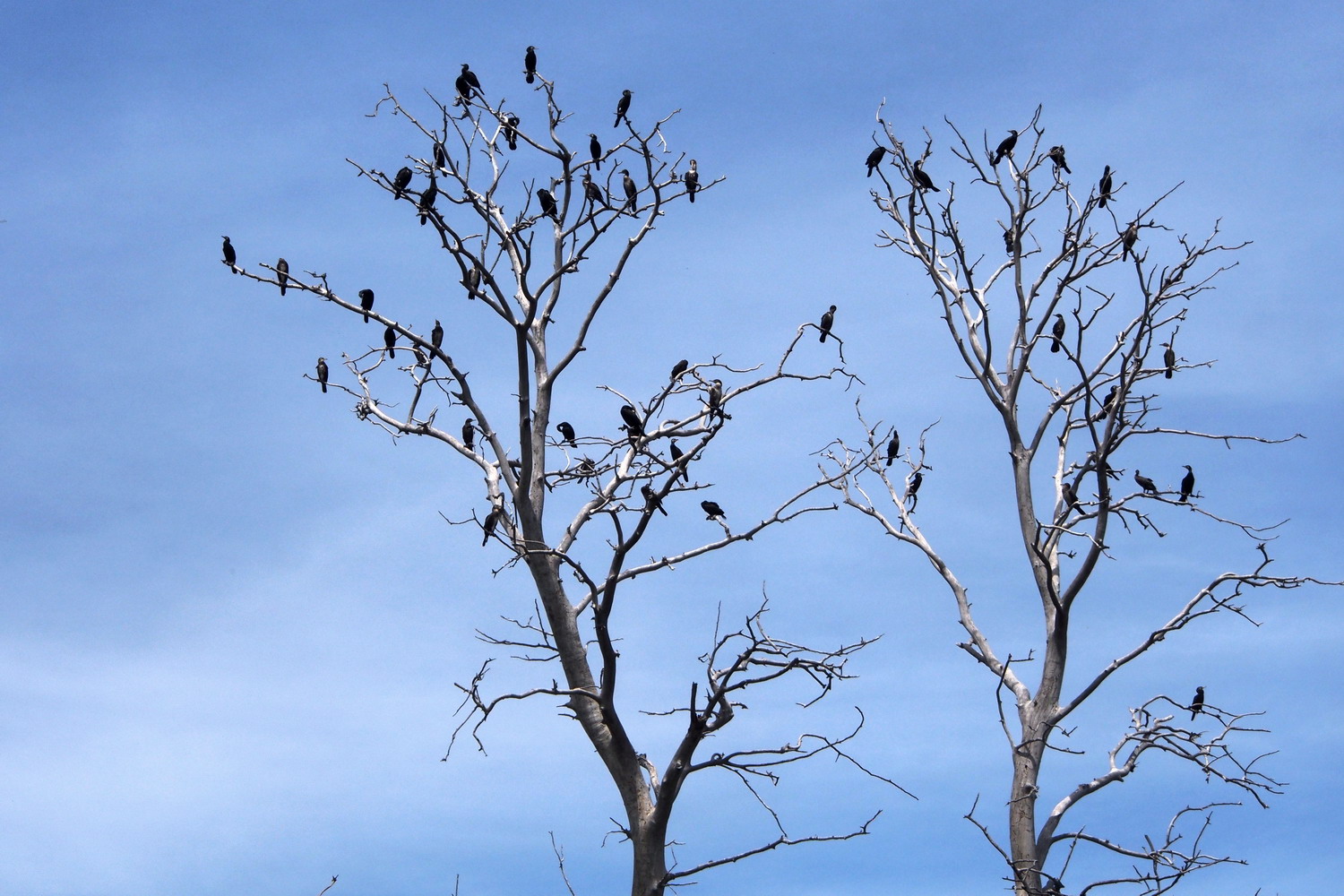
…. And goodbye to this magnificent page of the magic Danube book!
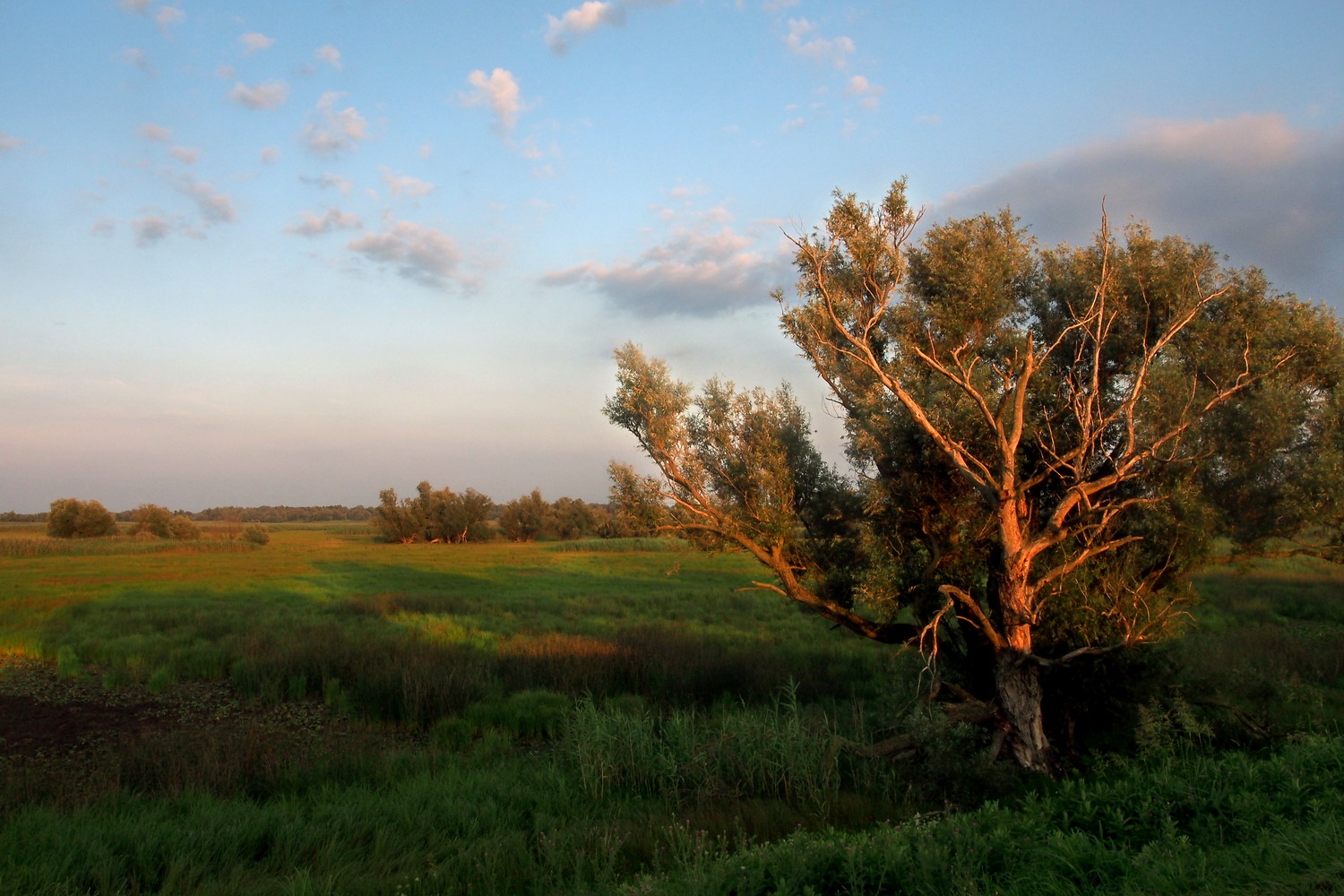
|
